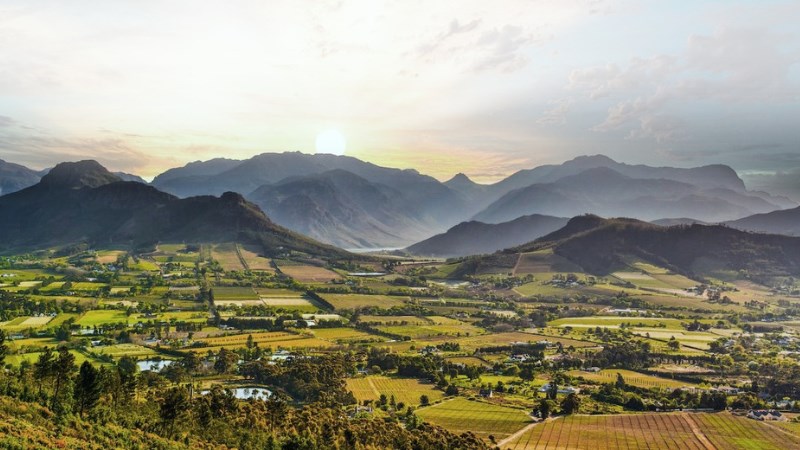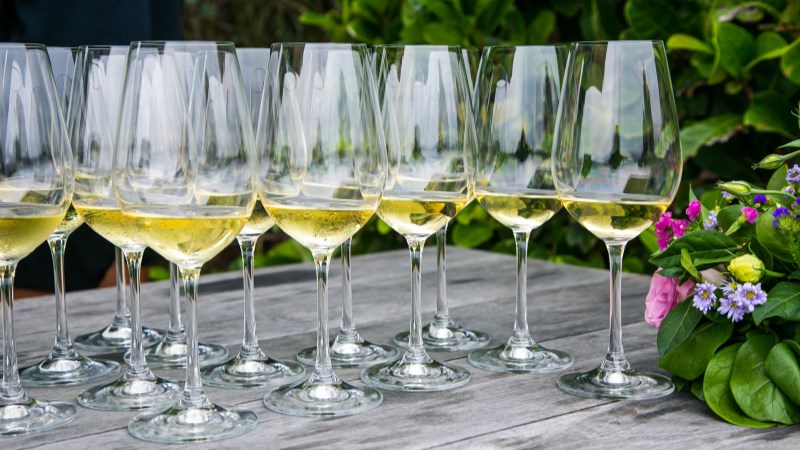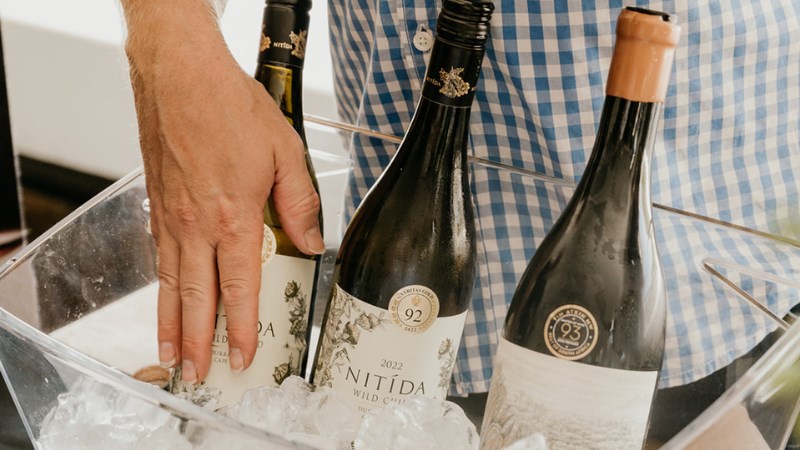
Convened on South African soil for the first time, the fourteenth annual Concours Mondial du Sauvignon held in Franschhoek in March 2023 was an international showcase for Sauvignon Blanc SA. Fifty judges (including ten South Africans) representing 19 nationalities judged a record 1 210 entries from twenty countries. South African producers entered 152 wines, winning two trophies, 26 gold medals, and 30 silver medals. The most popular wine variety in South Africa was in the spotlight.
During the Concours Mondial du Sauvignon, local wine media were treated to a number of regional showcases of Sauvignon Blanc, notably in the Franschhoek, Durbanville and Constantia Wine Valleys.
Groot Constantia, the oldest wine farm (1685) in the Cape hosted a dinner tasting of Sauvignon Blanc made by nine producers in a valley which specialises in cool-climate expressions of this white variety (188 out of 437 ha). I enjoyed a lesson in Sauvignon which explored the diversity of terroir of a cultivar planted 50-360 metres above sea-level on a combination of elevations, slopes and soils.
Winemakers from Constantia Royale, Groot Constantia, Klein Constantia and Steenberg presented standard and reserve Sauvignon Blancs and SB/Semillon blends – while other producers inter alia Beau Constantia, Buitenverwachting, Constantia Glen, and Groot Constantia demonstrated the staying power of their Cabernet Franc in red Bordeaux-style blends.
A five-star dinner at Jonkershuis ended with a taste of two of the famed dessert wines known throughout Europe over the centuries simply as Constantia – Groot Constantia’s Grand Constantia 2018 and Klein Constantia Vin de Constance 2019 (both made from Muscat de Frontignan).

Staying on the Sauvignon Blanc trail, the next day I headed over to Durbanville Hills which hosted another showcase of the great white grape of the Durbanville Wine Valley.
Thirteen local producers showcased the different expressions of Sauvignon Blanc grown on different contours, slopes and elevations of the valley planted predominantly to over one-third of the variety (530 out of 1426 ha). Small groups of media, judges and trades tasted our way around stations where thirteen cellars presented some thirty Sauvignon Blanc wines paired to matching canapes along the way.
The diversity of Sauvignon Blanc terroir in the cool-climate Durbanville Wine Valley stood out in the tasting – where winemakers contrasted styles which ranged across tropical thiols, green pyrazines and minerality (especially from older, clones grown in single vineyards) in sparkling, unoaked, wooded and blend expressions. Sauvignon sceptics out there who claim the variety one-dimensional should spend the day tasting their way across the valley to experience the incredible versatility of this cultivar.
Durbanville is home to some of the far-sighted statesmen of Sauvignon Blanc who have spent two decades building the hero brand inter alia Bernhard Veller of Nitida, Charles Hopkins of De Grendel, Thys Louw of Diemersdal, Etienne Louw of Nitida, and Martin Moore of Durbanville Hills.
I first met the burly figure of cellar master Martin Moore at Durbanville Hills in the late 1990s – and its always great to be back at this Sauvignon Blanc starship. At the Concours tasting, he showed me around the new tasting lounge being developed in the cellar – which will take visitors on a virtual tour of the intriguing contours and terroir of the Durbanville Wine Valley. One of the jewels of Distell, this staff, grower and corporate owned enterprise is the gateway to a valley of old family farms worked for generations from Altydegedacht and Diemersdal (both founded in 1698) to Meerendal (1702) and Groot Phesantekraal (1698).
Some of the stand-outs at the tasting for me were the brilliant Bloemendal Suider Terras SB 2017 (made from the oldest bushvine bloc in the valley), D'Aria The Songbird SB 2022 (leesy texture from concrete eggs), Diemersdal The Journal SB 2017 (oaked, five-star Platter), Durbanville Hills Cape Mist SB 2022 and Tangram SB/Sem 2022 blend, Nitida Wild Child 2022 (barrel-fermented, five stars), and Nitida Corona Integration 2021 (SB/Semillon blend).

The event was also an opportunity to taste the six Durbanville wines which won the 26 gold medals awarded to South African wines at Concours Mondial du Sauvignon 2023 – Cape Garden CT SB 2021, Groot Phesantekraal SB 2022, Maastricht SB 2022, Diemersdal Reserve SB 2022, Durbanville Hills Cool Climate SB 2022 and the Tangram White Blend 2022. I also revisited the collaborative Sauvignon Blanc 2022 edition sourced and made by members of the Durbanville Wine Valley – and enjoyed talking to the winemakers of newer boutique producers like Canto, Maastricht, and Klein Roosboom.
The Durbanville tasting traversed the entire spectrum of Sauvignon from the signature dusty, herbal fynbos and green, herbaceous pyrazine character of cool-climate Savvy through the tropical thiol, citrus, grenadilla and lemon zest style to the wet stone, flint and oyster-shell minerality style.
Winemaker Thys Louw of Diemersdal, a savvy specialist who has spearheaded the hero variety of the valley, makes eight different expressions of dryland Sauvignon Blanc today. Experimenting with Italian clay pots, frozen juice winter ferments, wild ferments, different barrel regimes, single blocs and a Diemersdal Marlborough/NZ SB, he has demonstrated a world in one variety. That’s savvy.
Another day I’ll revisit some of the other leading Sauvignon Blanc regions such as Darling and Stellenbosch (Concours 2023 gold medalists include signature SB producers like Kleine Zalze, Rustenberg, Spier, Vergelegen, and Villiera). The Villiera Bushvine Sauvignon Blanc 2022 won the Tonnellerie Sylvin Trophy for the best wooded SB – while Darling Cellars Gustus SB 2020 won the Revelation SA trophy for the best performing wine on the Concours Mondial du Sauvignon 2023.